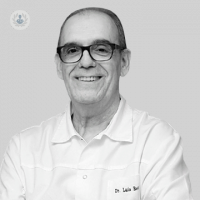Radiofrequency, a technique of minimal risk
Written by:
The radiofrequency nostrils is generally used for volume reduction of inferior turbinates. Inside are numerous vascular structures. When the turbinates are increased in size, involving the passage of air through the nostrils, the patient experiencing obstruction at the same. This is most noticeable when the patient is lying because of the difficulty emptying turbinate to the "absence" of gravity.
What is Radiofrequency nasal surgery?
Radiofrequency turbinate is to apply, after topical anesthesia and followed by local anesthesia, a high frequency electric current inside the inferior turbinate through a thin metal electrode. This procedure does not reach 30 seconds long, it is not painful and get response fibrosis inside which will lead to decreased volume of the same after a few days.
What this technique implies advantages over other?
There are numerous advantages versus radiofrequency preceding techniques. Previous RF techniques cause excessive bleeding during execution, which is essential to carry out under general anesthesia and endotracheal intubation; in addition to the obligation for the patient to wear a nasal tamponade at least during the first 48 hours after the procedure.
What are the risks this intervention?
The risk of bleeding post-intervention is very low, the nasal packing is not necessary and respiratory improvement is noticeable After the first 48 hours.
Is it a painful procedure? What kind of notice discomfort during surgery?
The nasal topical anesthesia, which is the first step of the procedure, facilitates the complete absence of pain when we apply the "second" anesthesia, which is now injected into the turbinate. Then the specialist in Otolaryngology introduces the thin metal electrode in the head of the turbinate and apply the high frequency current.
The procedure is pain free even if they can be appreciated tactile sensations as I do.
What kind of care should follow the patient after the operation?
The day after surgery we apply saline into the nostrils and occasionally indicate the use of a nasal ointment to moisten the nostrils.
The end result, the marked improvement in nasal breathing, occur after approximately two weeks.


